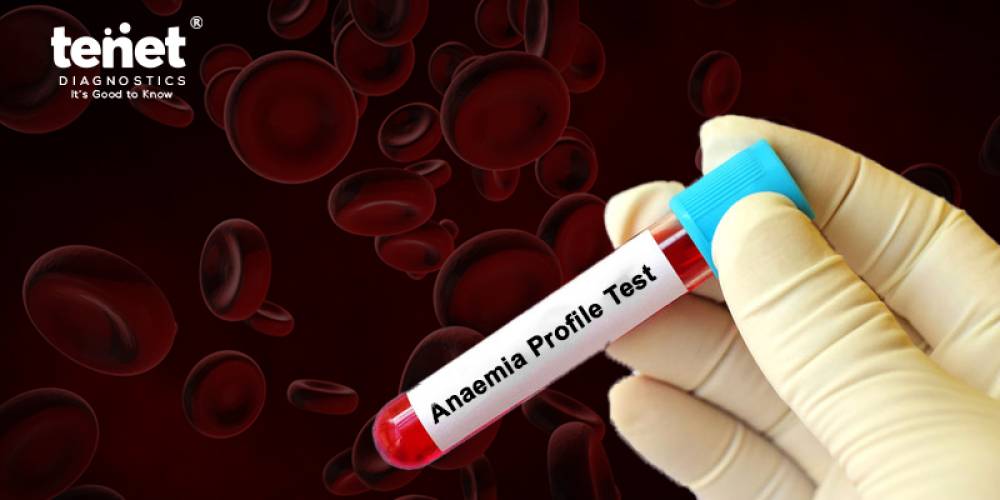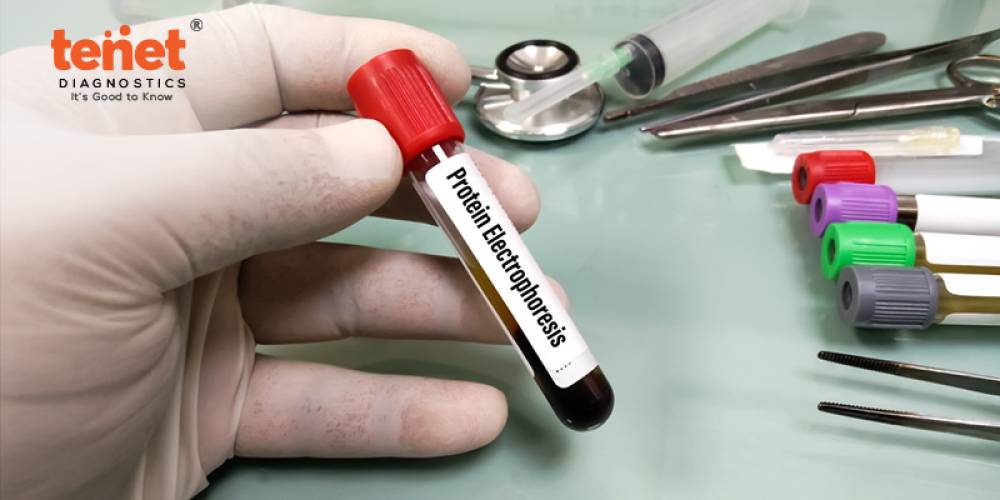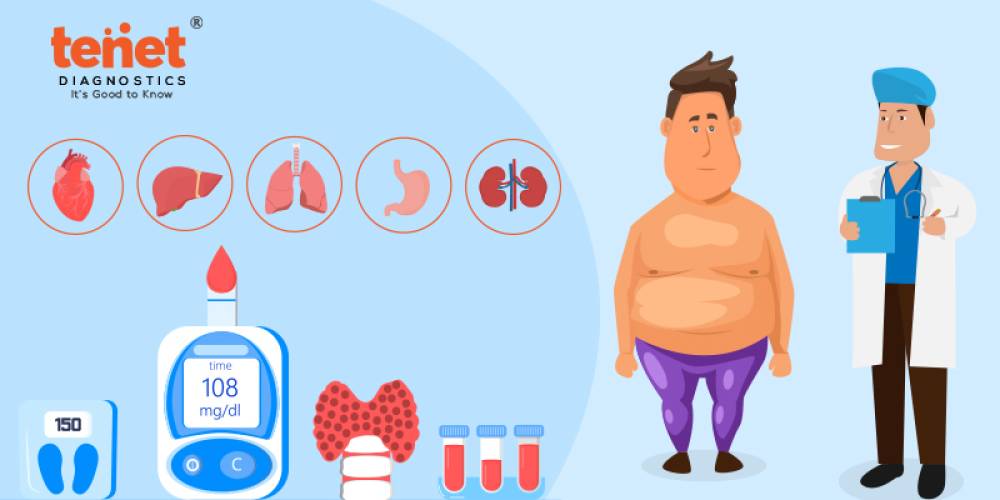Anaemia Profile Test, where we cover all the ins and outs of this test, including types, costs, how to prepare, and how to interpret the results. Millions of people worldwide suffer from anemia, a common disorder marked by a lack of red blood cells or hemoglobin. The Anaemia Profile Test is essential for early detection of anemia, which is necessary for prompt management and treatment.
We'll go into great detail about the Anaemia Profile Test's importance, what it involves, and what to anticipate in this blog post. This guide is designed to provide you with useful information regarding anemia testing, whether you're a healthcare professional looking for additional details or a layperson concerned about their own health.
What is Anemia?
Anaemia is caused by a decrease in the amount of red blood cells (RBCs) or hemoglobin levels. This affects the blood's ability to deliver oxygen to different tissues and organs. The most frequent cause is a diet lacking in iron, vitamin B12, and folic acid. This may be because the food is deficient in certain nutrients, there is a greater loss that cannot be made up for by diet, or there is a greater unmet demand during pregnancy and breastfeeding. Anaemia frequently manifests as weakness, exhaustion, irritability, headaches, and shortness of breath.
Typical Forms of Anemia Include:
1. Iron Deficiency Anemia
Iron Insufficiency Anemia Iron Deficiency is one of the most prevalent types of anemia. Anemia is the result of your body not having enough healthy red blood cells because of an iron deficiency. Because RBCs are essential for delivering oxygen to tissues, a deficiency can prevent your body from receiving adequate oxygen, which can cause many health problems. Your risks of acquiring it are increased by inadequate iron consumption, excessive blood loss from menstruation, surgery, accidents, pregnancy, and impaired iron absorption. Those who suffer from mild to severe iron deficiency anemia may:
- Unknown tiredness
- Deficiency
- breathing difficulties
- having a craving for innutritious food
- brittle nails
Many symptoms may arise from the disease, so it is important to closely monitor them to identify the issue and begin treatment as soon as possible.
2. Vitamin deficiency anemia
Pernicious anemia is another name for vitamin deficiency anemia. Anemia is the result of your body not absorbing enough nutrients because of a condition or not having enough vitamin B12 or B9 (folate). Some important reasons for the illness include intestinal issues, heavy alcohol consumption, certain medications, a history of stomach surgery, and a diet deficient in vitamin B12 or B9. Their mild symptoms progressively get worse over time. The following are some typical indicators that one should be aware of:
- palpitations in the heart
- Breathlessness
- Abrupt reduction in body mass
- weakened muscles
- pale skin
To take further action, your healthcare provider may investigate the symptoms and recommend an Anemia Profile Blood Test.
3. Sickle cell anemia
Red blood cells, which are mainly in charge of delivering oxygen to other body components, undergo morphological alterations due to sickle cell anemia blood test. Sickle cell anemia symptoms can vary over time and often appear around six months of age.
- feet and hands swelling
- recurring infections
- Delay a child's development and a teen's puberty
- issues with vision
Getting medical help as soon as possible is crucial to managing the illness and lowering the chance of complications.
4. Hemolytic anemia:
Another type of anemia known as hemolytic anemia occurs when the bone marrow is unable to produce enough red blood cells to replenish the lost ones in the blood. The illness may arise later in life or may be hereditary. It is evident that every individual experience distinct types of symptoms, such as:
- unusually pale
- urine with a dark hue
- lassitude and vertigo
- enlarged liver and spleen
- elevated heart rate
Because the symptoms resemble those of other blood disorders, medical practitioners recommend an Anaemia Profile Blood Test to rule out the illness.
What Is Anemia Profile?
A blood condition known as anemia occurs when there are either fewer red blood cells or less hemoglobin than usual (hemoglobin is the oxygen-carrying component of red blood cells). It is a prevalent ailment that impacts individuals of all ages, races, and ethnicities, men and women alike. A series of laboratory blood tests called anemia profiles are used to determine the body's levels of iron, hemoglobin, ferritin, and oxygen binding capacity.
To undergo anemia blood test in Hyderabad, visit Tenet diagnostic which is a premium diagnostic center which offer premium services.
Types Of Blood Test That Diagnose Anemia:
Anemia can be diagnosed using a few standard blood tests. Your symptoms, medical history, and the outcomes of previous tests will determine which specific tests a physician or other healthcare provider orders. Let's examine some of the most popular blood tests used to identify anemia in more detail.
Completed blood test:
When diagnosing anemia, a complete blood count (CBC) is typically the first test ordered. It's frequently used in conjunction with other diagnostic tools. The following blood values are measured by a CBC:
- Red blood cells
- white blood cells
- hemoglobin
- platelets
Doctors pay special attention to your hemoglobin and red blood cell counts when treating anemia. Mean corpuscular volume is another number typically displayed on a CBC that may aid in diagnosing anemia. A microcytic anemia, such as iron deficiency, may be indicated by a low value, while a macrocytic anemia, such as B12 deficiency, may be indicated by a high value.
Iron panel check:
Iron deficiency can occasionally lead to anemia. An iron panel, also known as a serum iron test, is a blood test that a doctor will request if they suspect this might be the case. This test will determine your blood's iron content. Several lab values are usually included in an iron panel, including:
- A protein called ferritin is responsible for storing iron in serum
- Transferring saturation
- Overall iron binding capability.
These readings could be useful in determining whether iron shortage or persistent inflammation is the cause of anemia.
Reticulocyte count:
The quantity of immature red blood cells in your blood is determined by a reticulocyte count. It can aid medical professionals in determining how many red blood cells your bone marrow is generating. This test is crucial because it helps identify the underlying cause of anemia. For example, if your reticulocyte count indicates a high immature red blood cell count but your CBC results indicate a low red blood cell count, this could indicate that you are losing blood in some way. On the other hand, low amounts of immature and mature red blood cells may indicate that your body isn't producing enough red blood cells.
Blood smear test:
An additional test to help identify the potential cause of anemia is a blood smear. A drop of blood is applied to a medical slide to create a blood smear. Next, a staining liquid is added to the slide, which can be used to identify any variations in the blood cell's form. Red blood cells with a crescent shape are a symptom of sickle cell anemia, which may be diagnosed with this test. The diagnosis of some nutritional deficits, which can result in abnormally big red blood cells, may also benefit from it.
Final Words:
In summary, anyone looking to keep an eye on their general health and wellbeing must comprehend the Anaemia Profile Test. Several forms of anemia can be found with this thorough examination, which helps with early diagnosis and treatment planning.
The test provides a thorough picture of a person's blood health by measuring characteristics, such as hematocrit, red blood cell count, and hemoglobin levels. It's crucial to remember that medical specialists may advise fasting or avoiding specific medications to prepare for the test. It is impossible to overestimate the importance of the Anaemia Profile Test in diagnosing and treating anemia, even though its cost may differ based on region and healthcare provider.
Frequently Asked Questions:
What used in the blood test for diagnosing anaemia?
Complete blood count. The amount of blood cells in a sample of blood is counted using a CBC. The test for anemia determines the blood's hemoglobin level and hematocrit, or the quantity of red blood cells in the blood.
Which chemical is used in the blood test for diagnosing anaemia?
To diagnose anemia, a blood test uses blue vitriol. Blue vitriol is added to the Bordeaux mixture, used as a fungicide on fruits like grapes, muskmelon, and slaked lime.
Which test is used to detect anaemia?
One of the most popular blood tests is the complete blood count. It frequently occurs as a part of a regular examination. This test counts red blood cells, white blood cells, and platelets among other components of your blood. Anemia may be indicated by red blood cell counts that are greater or lower than usual.
When should i get tested for anaemia?
Reduced oxygen transport to the body is the cause of iron-deficiency anemia symptoms, which might include paleness or yellowing, "sallow" skin. unexplained exhaustion or low vitality. breathing difficulties or chest pain, particularly when moving.







